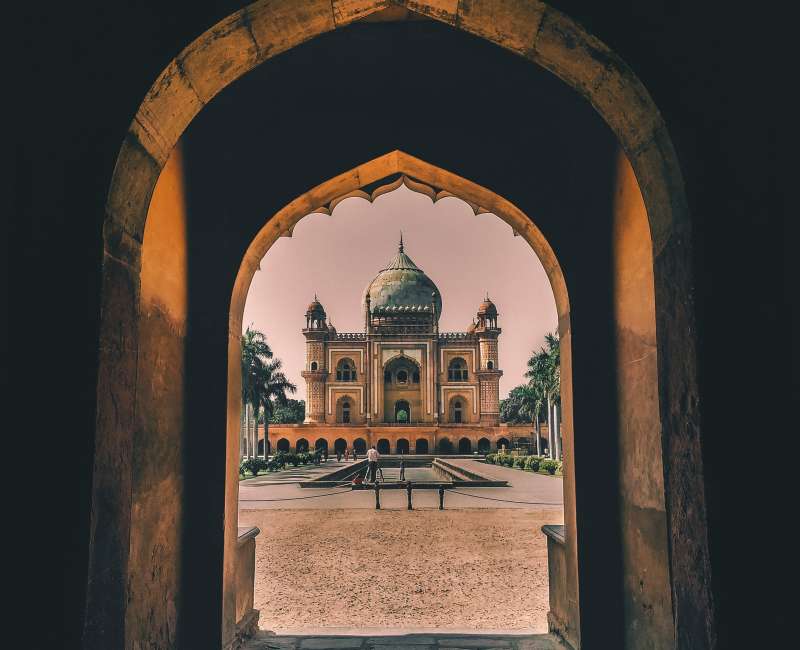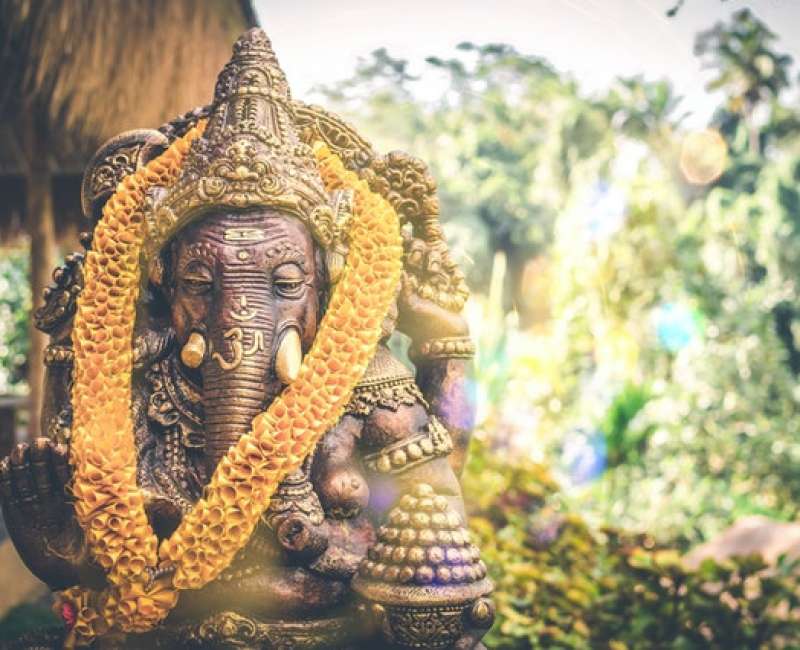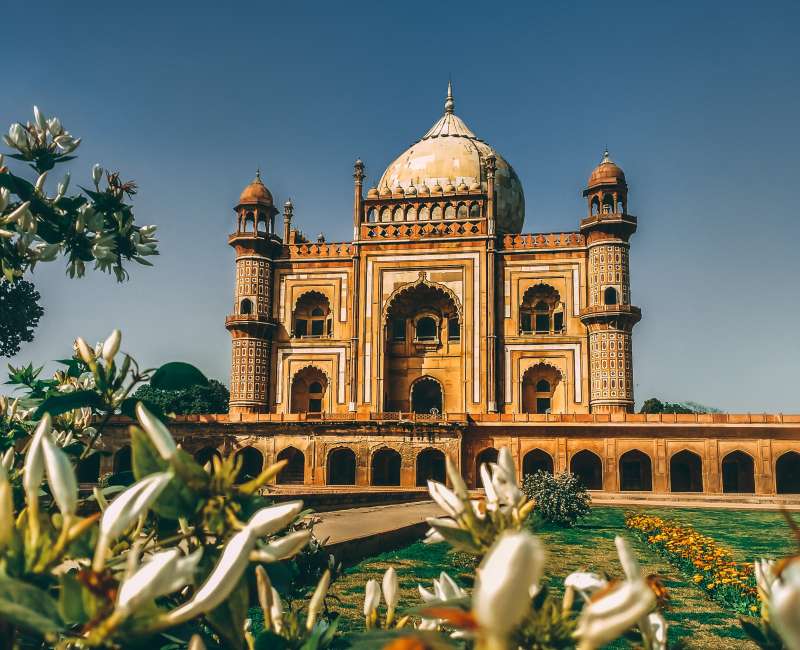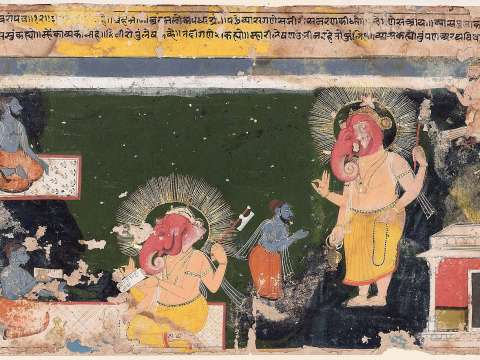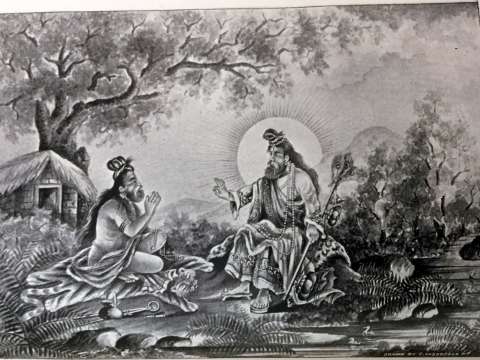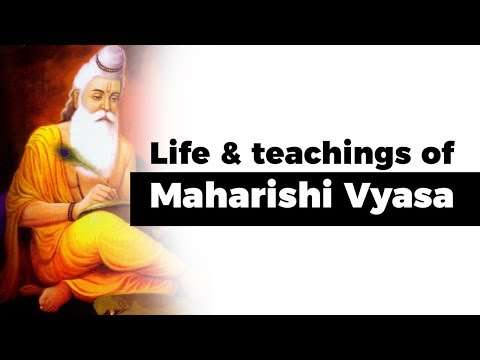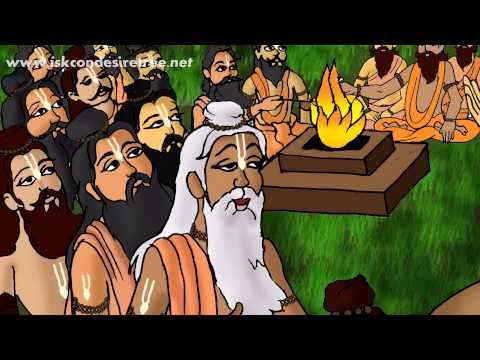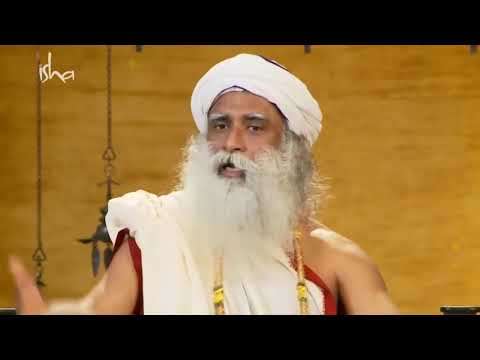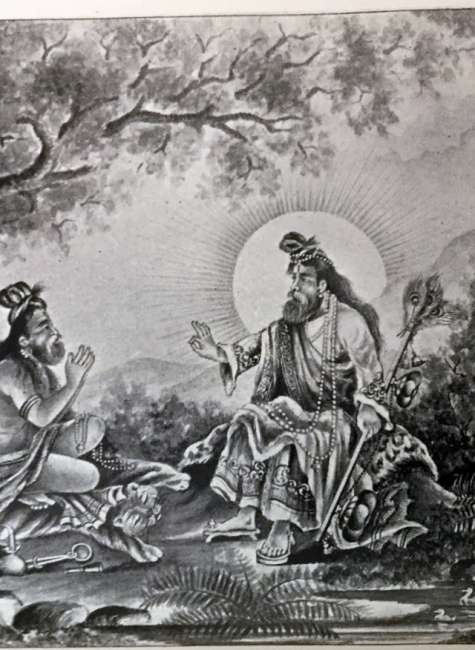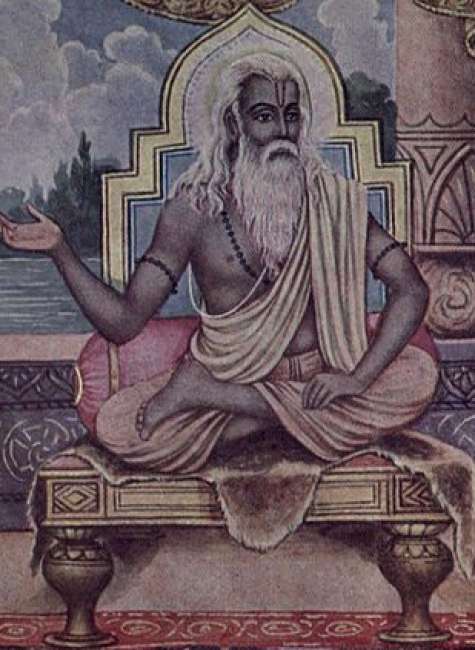

Vyasa
No one belongs to me; I belong to no one. There is no "I" or "mine"; all is blissful aloneless.
Vyasa, literally "Compiler" is the traditional author of the Mahabharata, and Puranas, as well as the traditional compiler of the Vedas, some of the most important works in the Hindu tradition. He is also called Veda Vyāsa:, veda-vyāsaḥ, "the one who classified the Vedas" or Krishna Dvaipāyana referring to his dark complexion and birthplace.
The festival of Guru Purnima is dedicated to him. It is also known as Vyasa Purnima, the day believed to be both of his birth and when he divided the Vedas. Vyasa is considered one of the seven Chiranjivis long-lived, or immortals, who are still in existence according to Hindu tradition.
Name
Vyasa's birth name is Krishna Dvaipayana, which refers to his dark complexion and birthplace. He is often referred to as "Veda Vyasa" (Veda Vyāsa) as he is believed to have arranged the single eternal Veda into four parts — Rigveda, Samaveda, Yajurveda and Atharvaveda.
The word "Vyasa" (Vyāsa) refers to "compiler," "arranger," and also means "separation," "division." Other meanings are "split," "differentiate" or "describe." It is also a title, given to "a holy sage or a pious learned man," and applied to "persons distinguished for their writings."
Hindus traditionally hold that Vyasa categorized the primordial single Veda into three canonical collections, and that the fourth one, known as Atharvaveda, was recognized as Veda only very much later. Hence he was called Veda Vyasa, or "Splitter of the Vedas," the splitting being a feat that allowed people to understand the divine knowledge of the Veda.
The Vishnu Purana elaborates on the role of Vyasa in Hindu chronology. The Hindu view of the universe is that of a cyclic phenomenon that comes into existence and dissolves repeatedly. Each kalpa cycle is presided over by a number of Manus, one for each manvantara, and each manvantara has a number of Yuga Cycles, each with four yuga ages of declining virtues. The Dvapara Yuga is the third yuga. The Vishnu Purana (Book 3, Ch 3) says
In every third world age (Dvapara), Vishnu, in the person of Vyasa, in order to promote the good of mankind, divides the Veda, which is properly but one, into many portions. Observing the limited perseverance, energy and application of mortals, he makes the Veda fourfold, to adapt it to their capacities; and the bodily form which he assumes, in order to effect that classification, is known by the name of Veda-Vyasa. Of the different Vyasas in the present Manvantara and the branches which they have taught, you shall have an account. Twenty-eight times have the Vedas been arranged by the great Rishis in the Vaivasvata Manvantara [...] and consequently, eight and twenty Vyasa's have passed away; by whom, in the respective periods, the Veda has been divided into four. The first... distribution was made by Svayambhu (Brahma) himself; in the second, the arranger of the Veda (Vyasa) was Prajapati [...] (and so on up to twenty-eight).
Early life
Vyasa appears for the first time as the compiler of, and an important character in, the Mahabharata. It is said that he was the expansion of the God Vishnu, who came in Dvapara Yuga to make all the Vedic knowledge from oral tradition available in written form. He was the son of Satyavati, adopted daughter of the fisherman Dusharaj and the wandering sage Parashara, who is credited with being the author of the first Purana, Vishnu Purana.
According to legend, in a previous life Vyasa was the Sage Apantaratamas, who was born when Lord Vishnu uttered the syllable "Bhu". He was a devotee of Lord Vishnu. Since birth, he already possessed the knowledge of the Vedas, the Dharmashastras and the Upanishads. At Vishnu's behest, he was reborn as Vyasa.

Vyasa was the son of Sage Parashara and great grandson of Sage Vashistha. Prior to Vyasa's birth, Parashara had performed a severe penance to Lord Shiva. Shiva granted a boon that Parashara's son would be a Brahmarshi equal to Vashistha and would be famous for his knowledge. Parashara begot Vyasa with Satyavati. She conceived and immediately gave birth to Vyasa. Vyasa became an adult and left, promising his mother that he would come to her when needed.
Vyasa acquired his knowledge from the four Kumaras, Narada and Lord Brahma himself.
Vyasa is believed to have lived on the banks of Ganga in modern-day Uttarakhand. The site was also the ritual home of the sage Vashishta, along with the Pandavas, the five brothers of the Mahabharata.
Role In Mahabharata
According to the Mahabharata, the sage Vyasa was the son of Satyavati and Parashara. During her youth, Satyavati was a fisherwoman who used to drive a boat. One day, sage Parashara was in a hurry to attend a Yajna. Satyavati helped him cross the river borders. Parashara was enchanted by the beauty of Satyavati and wanted his heir from her. Initially she did not agree to his demand telling that other saints would see them, and her purity would be questioned. So Parashara created a secret place with bushes and Satyavati agreed. Satyavati later gave birth to Vyasa. Parashara took away Vyasa with him when he was born. She kept this incident a secret, not telling even King Shantanu whom she was married to later.
After many years, Shantanu and Satyavati had two sons, named Chitrangada and Vichitravirya. Chitrangada was killed by Gandharvas in a battle, while Vichitravirya was weak and ill all the time. Satyavati then asked Bhisma to fetch queens for Vichitravirya. Bhishma attended the swayamvara conducted by the king of Kashi present-day Varanasi, and defeated all the kings. Amba openly rebuted the swayamvara as she was in love with the prince of shalva, which was against the rule of swayamvara. Later bhishma came to know that King of Kashi did not know about the love of his elder daughter, so Bhishma released Amba and allowed her to go to Shalva kingdom and marry the prince who later rejected her. She came back to Bhishma and asked him to marry her, which he could not due to his vow of life long celibacy. She shuttled between Bhishma and Shalva with no success. Due to this she vowed to kill Bhishma. During the wedding ceremony, Vichitravirya collapsed and died. Satyavati was clueless on how to save the clan from perishing. She asked Bhishma to marry both the queens, who refused citing his vow and the promise that he made to her and his father, never to marry. He, therefore, could not father an heir to the kingdom. Later, Satyavati revealed to Bhishma, secrets from her past life and requested him to bring Vyasa to Hastinapur.

Sage Vyasa had a fierce personality and a bright, glowing spiritual aura around him. Hence upon seeing him, Ambika who was rather scared shut her eyes, resulting in their child, Dhritarashtra, being born blind. The other queen, Ambalika, turned pale upon meeting Vyasa, which resulted in their child, Pandu, being born pale. Alarmed, Satyavati requested that Vyasa meet Ambika again and grant her another son. Ambika instead sent her maid to meet Vyasa. The duty-bound maid was calm and composed; she had a healthy child who was later named Vidura.
While these are Vyasa's sons, another son Shuka, born of his wife Pinjalā Vatikā, daughter of the sage Jābāli was his true spiritual heir. Shuka appears occasionally in the story as a spiritual guide to the young Kuru princes.
Veda Vyasa
Hindus traditionally hold that Vyasa categorised the primordial single Veda into three canonical collections and that the fourth one, known as Atharvaveda, was recognized as Veda only very much later. Hence he was called Veda Vyasa, or "Splitter of the Vedas," the splitting being a feat that allowed people to understand the divine knowledge of the Veda. The word vyasa means split, differentiate or describe.
The Vishnu Purana elaborates on the role of Vyasa in Hindu chronology. The Hindu view of the universe is that of a cyclic phenomenon that comes into existence and dissolves repeatedly. Each cycle is presided over by a number of Manus, one for each Manvantara, that has four ages, Yugas of declining virtues. The Dvapara Yuga is the third Yuga. The Vishnu Purana Book 3, Ch 3 says:
According to the Vishnu Purana, Guru Drona's son Aswatthama will become the next sage Vyasa and will divide the Veda in 29th Maha Yuga of 7th Manvantara.
Works
The Mahabharata
Vyasa is traditionally known as the chronicler of this epic and also features as an important character in Mahābhārata, Vyasa asks Ganesha to assist him in writing the text. Ganesha imposes a precondition that he would do so only if Vyasa would narrate the story without a pause. Vyasa set a counter-condition that Ganesha understand the verses first before transcribing them. Thus Vyasa narrated the entire Mahābhārata and all the Upanishads and the 18 Puranas, while Lord Ganesha wrote.
Vyasa's Jaya literally, "victory", the core of the Mahabharata, is a dialogue between Dhritarashtra the Kuru king and the father of the Kauravas, who opposed the Pāndavas in the Kurukshetra War and Sanjaya, his adviser and charioteer. Sanjaya narrates the particulars of the Kurukshetra War, fought in eighteen days, chronologically. Dhritarashtra at times asks questions and expresses doubts, sometimes lamenting, fearing the destruction the war would bring on his family, friends and kin.

Large and elaborate lists are given, describing hundreds of kingdoms, tribes, provinces, cities, towns, villages, rivers, mountains, forests, etc. of the ancient Indian subcontinent Bhārata Varsha. Additionally, he gives descriptions of the military formations adopted by each side on each day, the death of individual heroes and the details of the war-races. Eighteen chapters of Vyasa's Jaya constitute the Bhagavad Gita, a sacred text in Hinduism. The Jaya deals with diverse subjects, such as geography, history, warfare, religion and morality.
The final version of Vyasa's work is the Mahābhārata. It is structured as a narration by Ugrasrava Sauti, a professional storyteller, to an assembly of rishis who, in the forest of Naimisha, had just attended the 12 year sacrifice known as Saunaka, also known as Kulapati.
Other texts attributed
Puranas
Vyasa is also credited with the writing of the eighteen major Purāṇas, which are works of Indian literature that cover an encyclopedic range of topics covering various scriptures. His son Shuka narrates the Bhagavata Purana to Arjuna's grandson Parikshit.
Yoga Bhashya
The Yoga Bhashya, a commentary on the Yoga Sutras of Patanjali, is attributed to Vyasa.
Brahma Sutras
The Brahma Sutras are attributed to Badarayana — which makes him the proponent of the crest-jewel school of Hindu philosophy, i.e., Vedanta. Vaishnava Acharyas acknowledge that Badarayana is indeed Vyasa and he is known as Badarayana as he had his ashram in Badari kshetram. Others believe the name to be because the island on which Vyasa was born is said to have been covered with badara Indian jujube/Ber/Ziziphus mauritiana trees. Some modern historians, though, suggest that these were two different personalities.

There may have been more than one Vyasa, or the name Vyasa may have been used at times to give credibility to a number of ancient texts. Much ancient Indian literature was a result of long oral tradition with wide cultural significance rather than the result of a single author. However, Vyasa is credited with documenting, compiling, categorizing and writing commentaries on much of this literature.
In Sikhism
In Brahm Avtar, one of the compositions in Dasam Granth, the Second Scripture of Sikhs, Guru Gobind Singh mentions Rishi Vyas as an avatar of Brahma. He is considered the fifth incarnation of Brahma. Guru Gobind Singh wrote brief account of Rishi Vyas's compositions about great kings— Manu, Prithu, Bharath, Jujat, Ben, Mandata, Dilip, Raghu Raj and Aj— and attributed to him the store of Vedic learning.
Legacy
Vyasa is widely revered in Hindu traditions. A grand temple in honour of Sri Veda Vyasa has been built at his birthplace in Kalpi, Orai, Uttar Pradesh. The temple is known as Shri Bal Vyas Mandir. Shrimad Sudhindra Teerth Swamiji, the erstwhile spiritual guru of Sri Kashi Math Samsthan, Varanasi, had the vision to construct this temple in 1998. The temple is managed by the Chitrapur Sarasawath Brahmin CSB community who belong to the said Sri Kashi Math Samsthan. This beautiful temple has now also become a popular tourist destination.
In popular culture
In the 1989 film The Mahabharata, Vyasa is played by Robert Lloyd Langdon.
More facts
Mahabharatham (2013-2016)























